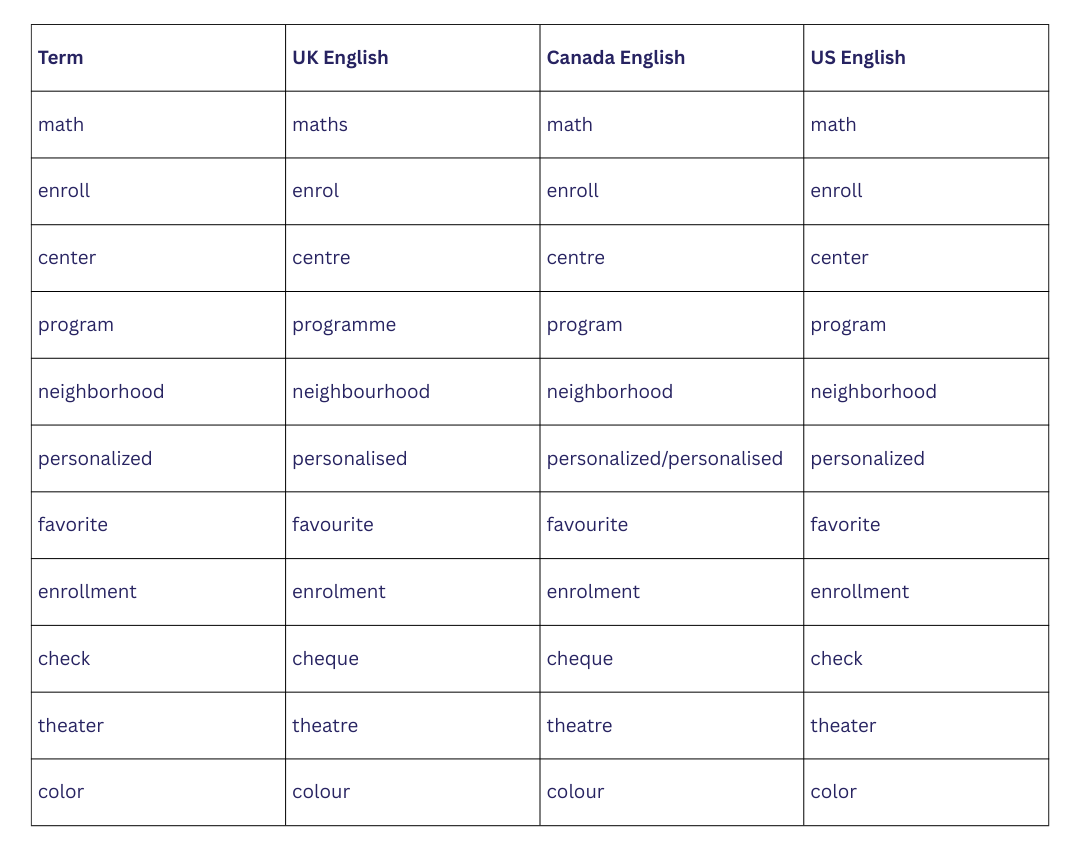Migrating a website is never just about moving content — it’s about rethinking your digital strategy from the ground up.
When Mathnasium, a global leader in math education, decided to consolidate its international websites under one domain, the goal wasn’t just operational efficiency. It was about consolidating their brand, boosting SEO, and delivering a seamless experience for families around the world.
In this guide, we take you behind the scenes of a high-impact international website migration — sharing the strategies, challenges, and lessons that helped turn complexity into clarity (and clicks). Whether you’re planning a migration or scaling globally, this playbook will show you how to do it right.
Table of Contents
What Is Website Migration?
Website migration is the process of making significant changes to your website’s structure, content, design, domain, or platform — often to improve SEO performance, user experience, or site functionality.
These changes might include moving to a new domain, consolidating multiple sites, switching CMS platforms, or transitioning from HTTP to HTTPS. In short: if you’re shifting how users and search engines access or experience your website, that’s a migration.
Now, while “migration” might sound like a simple move — think dragging and dropping files from one folder to another — it’s more like relocating a Michelin-star kitchen during peak dinner service. There’s timing, coordination, and a whole lot of precision involved.
And if you want to avoid broken links, SEO traffic loss, or frustrated users? You’ll need more than just developers — you’ll need a cross-functional dream team of SEO strategists, UX designers, content specialists, and technical leads who know how to future-proof your digital presence.
Why Brands Migrate Their Websites
There are many reasons businesses choose to migrate, but they usually fall into a few powerful categories:
Stronger SEO Performance
When done right, website migration can be a game-changer for your organic visibility. For Mathnasium, centralizing their global websites under a single domain allowed every regional page to benefit from unified, enterprise-level SEO strategy.
Here’s how we turned SEO from siloed to supercharged:
- URL optimization – Rewrote inconsistent or messy URLs into clean, keyword-rich slugs
- Page speed upgrades – Trimmed the fat to deliver faster-loading pages and lower bounce rates
- Technical SEO enhancements – Clean 301 redirects, canonical tags, and refreshed XML sitemaps
- Localized keyword strategies – Tailored content for each region, based on deep keyword research
- Eliminated keyword cannibalization – Ensured country-specific pages weren’t competing for the same search terms
- Boosted domain authority – Consolidated SEO value into one powerhouse domain
The result?
Improved rankings, higher traffic, and compounding gains across every global market. After consolidating regional domains under Mathnasium.com, organic search traffic surged across the board.
The UK saw a 190% increase in organic sessions year-over-year, while Australia experienced a staggering 2,371% jump. Mexico and Saudi Arabia followed suit with 1,068% and 171% gains respectively.
Beyond volume, engagement metrics improved as well — countries like the UAE reported some of the highest engagement rates and session durations via organic search.
Together, these results validate the strength of a centralized domain paired with locally tuned SEO: a strategy that turned fragmented efforts into scalable, sustained growth.
️Unified Branding
A single domain helps you maintain one clear voice, look, and feel — no matter where your users are. Whether a parent is searching from Paris or Pittsburgh, their experience is consistent, polished, and brand-true.
Better User Experience
A simplified site structure reduces friction. Visitors can find what they need faster, and site managers enjoy streamlined content updates and fewer platforms to maintain. Everybody wins.
Enhanced Security
Migrating to HTTPS is now table stakes. It safeguards data, signals trustworthiness, and even contributes to your Google ranking. A secure site isn’t just smart — it’s expected.
Why Mathnasium Unified Its Country-Specific Domains Under One Master Site
Before its global website migration, Mathnasium — a leading international math education franchise — managed separate domains or subdomains for each country. While this decentralized model functioned adequately during early growth, it became increasingly problematic as the brand scaled.
Each region operated in isolation, leading to:
- Inconsistent branding and messaging
- Disconnected user experiences
- Fragmented SEO performance
- Redundant efforts in content creation and site management
- Difficulty tracking performance across multiple platforms
Maintaining multiple domains made it harder to manage content efficiently, deliver a consistent brand experience, and capitalize on the SEO equity Mathnasium had already earned. It also complicated performance reporting and created friction for users trying to find the right local site.
To solve this, Mathnasium made a strategic decision to consolidate its international digital presence under one unified domain: mathnasium.com.
This move allowed the brand to:
- Strengthen global brand identity: A single domain created a unified voice, visual language, and user experience across all markets — reinforcing trust and brand recognition from Dubai to Dallas.
- Leverage domain authority for SEO: By consolidating content and backlinks into one site, Mathnasium amplified its organic search visibility. Every localized page contributed to the SEO strength of a single, authoritative domain.
- Streamline the user experience: Users now enjoy a simplified journey to find their local center, with faster load times and a more cohesive, intuitive interface.
- Centralize analytics and insights: With one global domain, performance tracking is unified — offering a clearer, more actionable view of user behavior, campaign effectiveness, and regional engagement.
- Simplify content governance: A centralized CMS reduces duplication and makes it easier for global teams to coordinate updates, launch initiatives, and maintain brand consistency across markets.
Countries Already Migrated to Mathnasium.com
- Canada
- United Kingdom
- Australia
- United Arab Emirates
- Saudi Arabia (dual-language)
- Mexico
- Romania
- Singapore
This migration initiative wasn’t just about technical efficiency — it was about future-proofing the brand’s global digital strategy. Each new country brought into the fold strengthens the Mathnasium ecosystem, reinforcing its position as a consistent, accessible, and high-performing educational brand worldwide.
Challenges in International Website Migration
While some website migrations are relatively straightforward, Mathnasium’s global footprint added layers of complexity — particularly around localization, language structure, and regional SEO requirements. Supporting multiple countries meant more than just duplicating content — it meant tailoring every element of the digital experience to meet the expectations of each market.
Language & Spelling Variants
In countries like the UK, Canada, and Australia, spelling and terminology diverge from standard US English. And while these differences may seem subtle, they have real implications for user trust, brand consistency, and SEO relevance.
For example, “center” in the U.S. becomes “centre” in the UK and Canada. “Enroll” becomes “enrol,” and “program” becomes “programme” — and so on.

To maintain both linguistic accuracy and keyword alignment, our content team conducted a full localization audit. Every headline, call-to-action, and metadata tag was reviewed through a regional lens. This ensured that users — and search engines — saw the right language, in the right place, at the right time.
Here’s a snapshot of some of the terminology variations we accounted for:
Dual-Language Design: Saudi Arabia
For the Saudi Arabian site, we implemented a bilingual experience in both Arabic and English. This required design and development adjustments beyond translation:
- Right-to-left (RTL) formatting for Arabic content
- Left-to-right (LTR) formatting for global elements like phone numbers and form fields
- Language toggles that persist across the site
- Localized metadata to ensure correct indexing and presentation in Arabic search results
The result: an accessible, intuitive site that honored both local linguistic norms and Mathnasium’s global brand standards.
Regional Typography: Romania
Typography matters — especially when special characters are involved. Romanian uses diacritics that aren’t always supported by global web fonts. To solve this, our design team sourced and implemented a typeface that:
- Fully supported Romanian characters
- Aligned visually with Mathnasium’s global brand identity
- Maintained consistency across all devices and screen sizes
This ensured content was not only readable but also beautifully presented — no matter where or how users accessed it.
How Localization Impacts SEO
Localization isn’t just a UX consideration — it’s a strategic SEO asset. When properly executed, localized experiences increase search visibility, relevance, and engagement in target markets. For Mathnasium, this meant:
- Higher rankings in international search engines
- Lower bounce rates from regionally misaligned pages
- Better conversions through culturally relevant content
One critical technical component of this success was hreflang implementation.
What Are Hreflang Tags?
Hreflang tags are HTML attributes that help search engines serve the correct language or regional version of a webpage to users in different markets. They’re essential for:
- Preventing duplicate content penalties across similar pages
- Ensuring users see content tailored to their language and location
- Supporting SEO performance in non-US regions
Example of Mathnasium’s hreflang setup:
<link rel=”alternate” hreflang=”en-us” href=”https://mathnasium.com/us” />
<link rel=”alternate” hreflang=”en-ca” href=”https://mathnasium.com/ca” />
<link rel=”alternate” hreflang=”en-gb” href=”https://mathnasium.com/uk” />
This tells search engines:
“These are separate, localized versions of the same content — serve each one appropriately based on the user’s geography and browser language.”
The result? Search engines index the right version of each page, users land on region-specific content, and the brand avoids competing with itself in global SERPs.
Local Keyword Research: What Works in One Market Might Not Work in Another
One of the most overlooked elements of international SEO is keyword behavior. Even when your services stay the same, the way people search for them can differ dramatically across regions. A direct translation of keywords often misses the mark — what you need is true localization.
For Mathnasium, we performed country-specific keyword research using Google Keyword Planner, Ahrefs, and Semrush. This informed everything from page headlines and metadata to on-page content and internal linking.
Here’s what that looked like in practice:
- In the UK, searchers commonly use phrases like “maths tutoring centre”
- In the US, they’re more likely to search for “math tutoring center”
- In Singapore, broader terms like “enrichment classes for kids” are more prevalent
By optimizing for how people actually search in each market — rather than relying on literal translations — we ensured Mathnasium’s localized pages had the best chance of ranking well and capturing relevant traffic.
Technical SEO for International Sites: Keep It Structured
Localization also affects how a site is structured behind the scenes — and these technical decisions can make or break your SEO performance.
To support Mathnasium’s global SEO goals, we implemented a range of foundational best practices:
- Regional subfolders: All country-specific content was placed in clearly defined URL paths (e.g., /uk, /ca, /sa-en), maintaining a strong domain while allowing for targeted regional SEO.
- Canonical tags: To avoid duplicate content conflicts between similar pages (especially among English-speaking markets), we implemented canonical tags that told search engines which version of each page was primary.
- Robots.txt and XML sitemaps: We updated robots.txt directives and generated new XML sitemaps to reflect the multilingual site architecture — improving crawlability and indexing.
- Page speed optimization: Every localized version was optimized for speed, accounting for varying connection speeds and device types across global markets.
These backend improvements ensure that localized pages are fast, discoverable, and technically sound — laying the groundwork for long-term SEO growth in every market Mathnasium serves.
Ready to Migrate?
Website migration is more than a technical exercise — it’s a strategic investment in your brand’s future. Whether you’re consolidating domains, expanding into international markets, or modernizing your digital presence, a well-executed migration can dramatically boost your SEO, improve user experience, and streamline your operations.
But let’s be honest: it’s also a high-stakes project. Done wrong, it can cost you traffic, rankings, and trust. Done right? It opens the door to exponential growth.
At Digital Spice, we help ambitious brands like Mathnasium transform complex migrations into scalable success stories. With our combined expertise in SEO, UX, content strategy, and technical development, we don’t just move websites — we elevate them.
Considering a migration of your own? Let’s talk. We’ll help you assess where you are, identify opportunities, and design a roadmap that minimizes risk and maximizes ROI.
Or get in touch to learn more about how we can support your global growth goals — one optimized page at a time.







